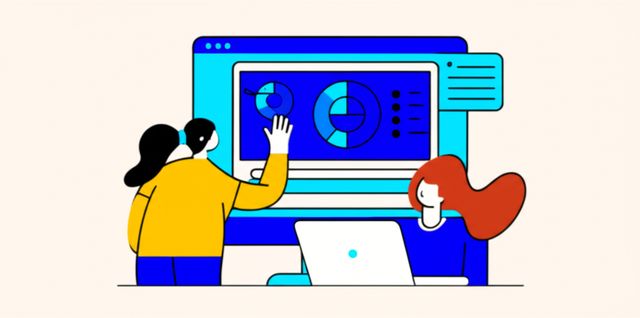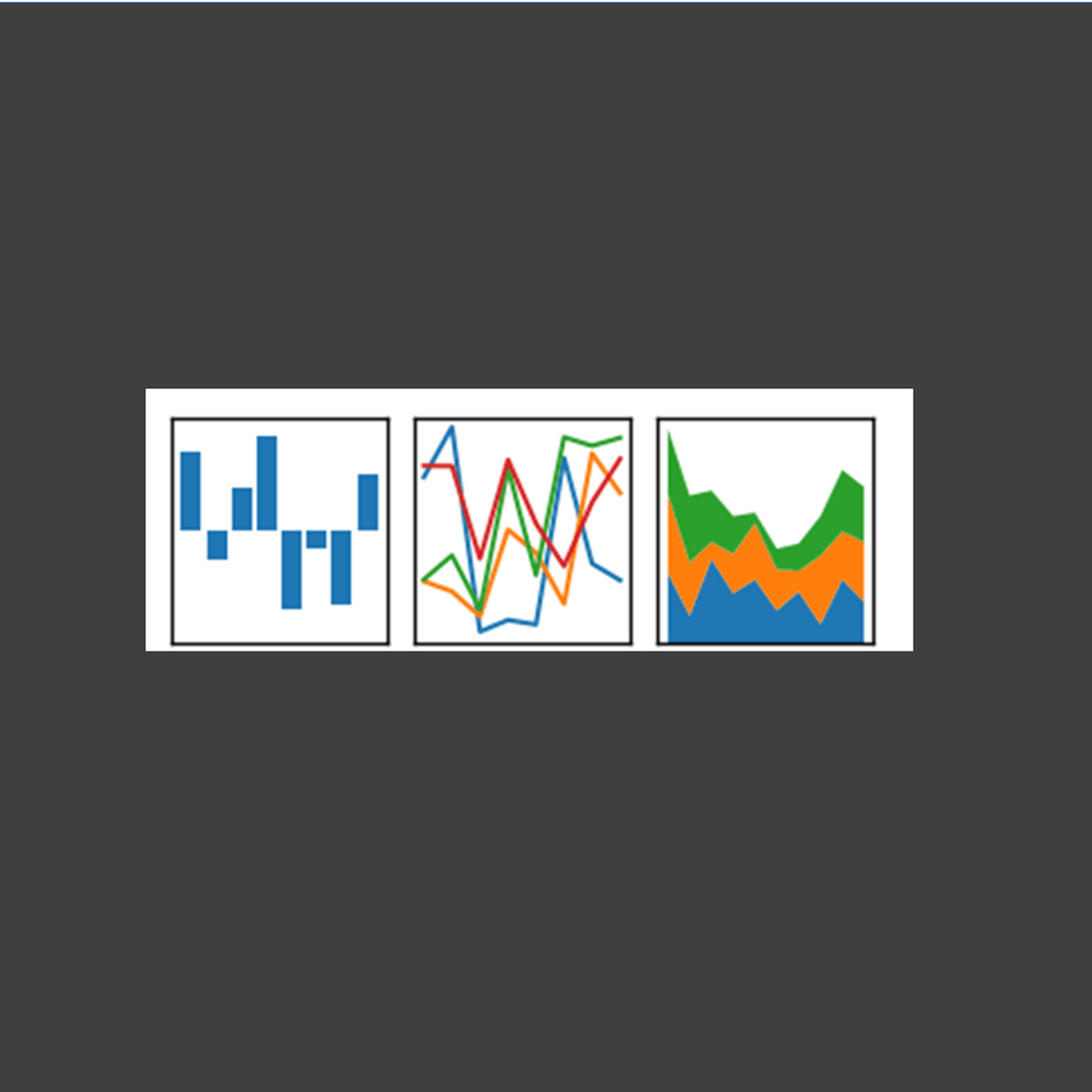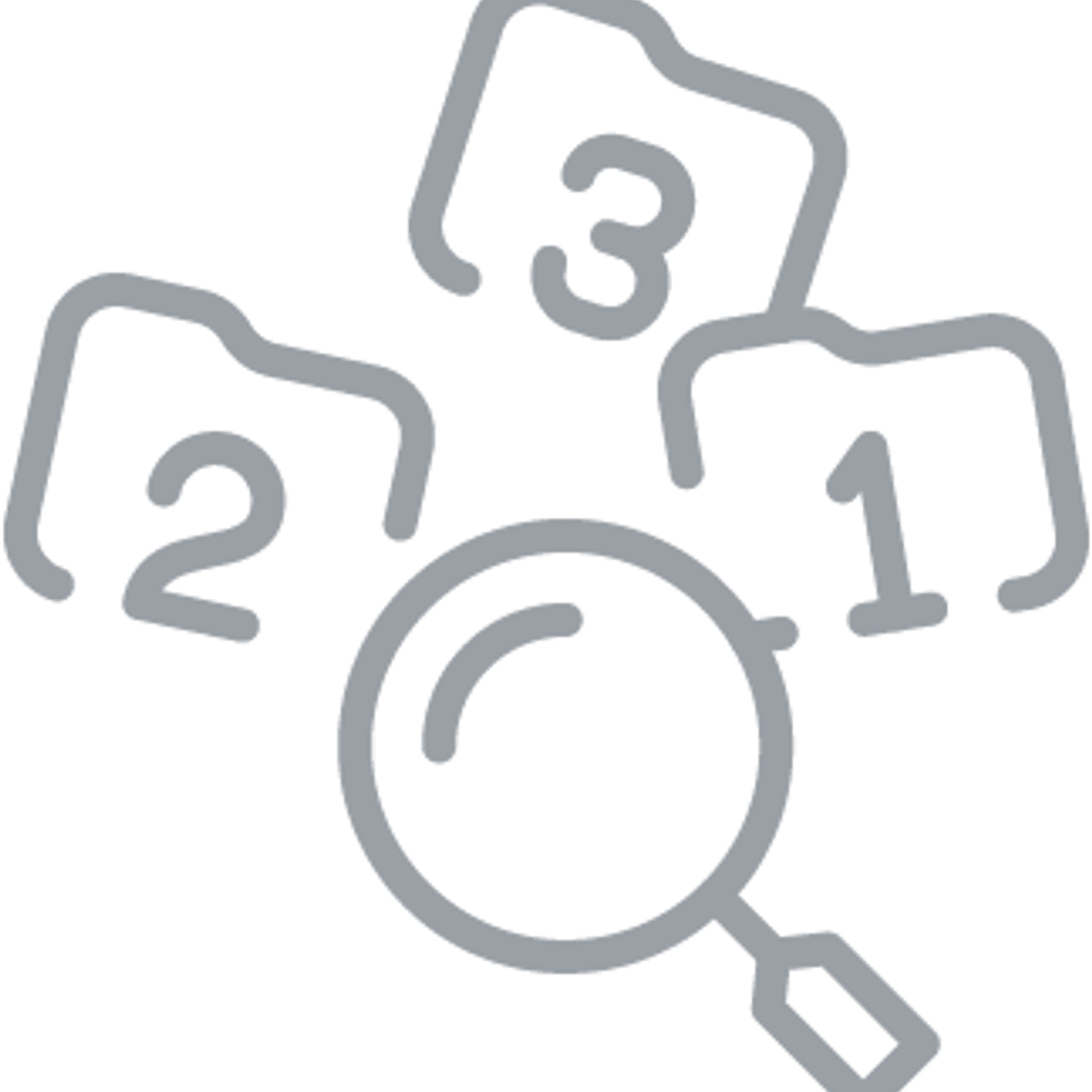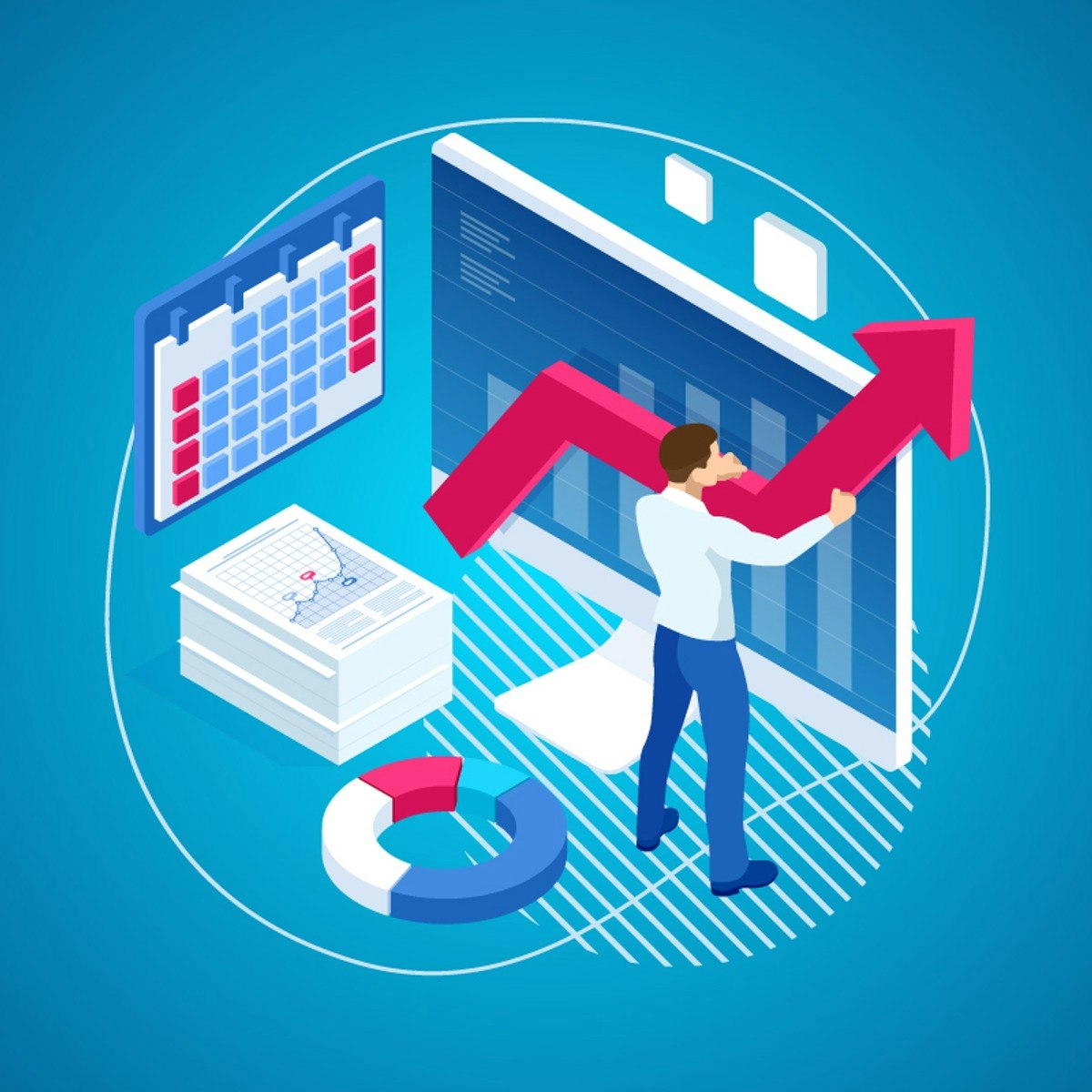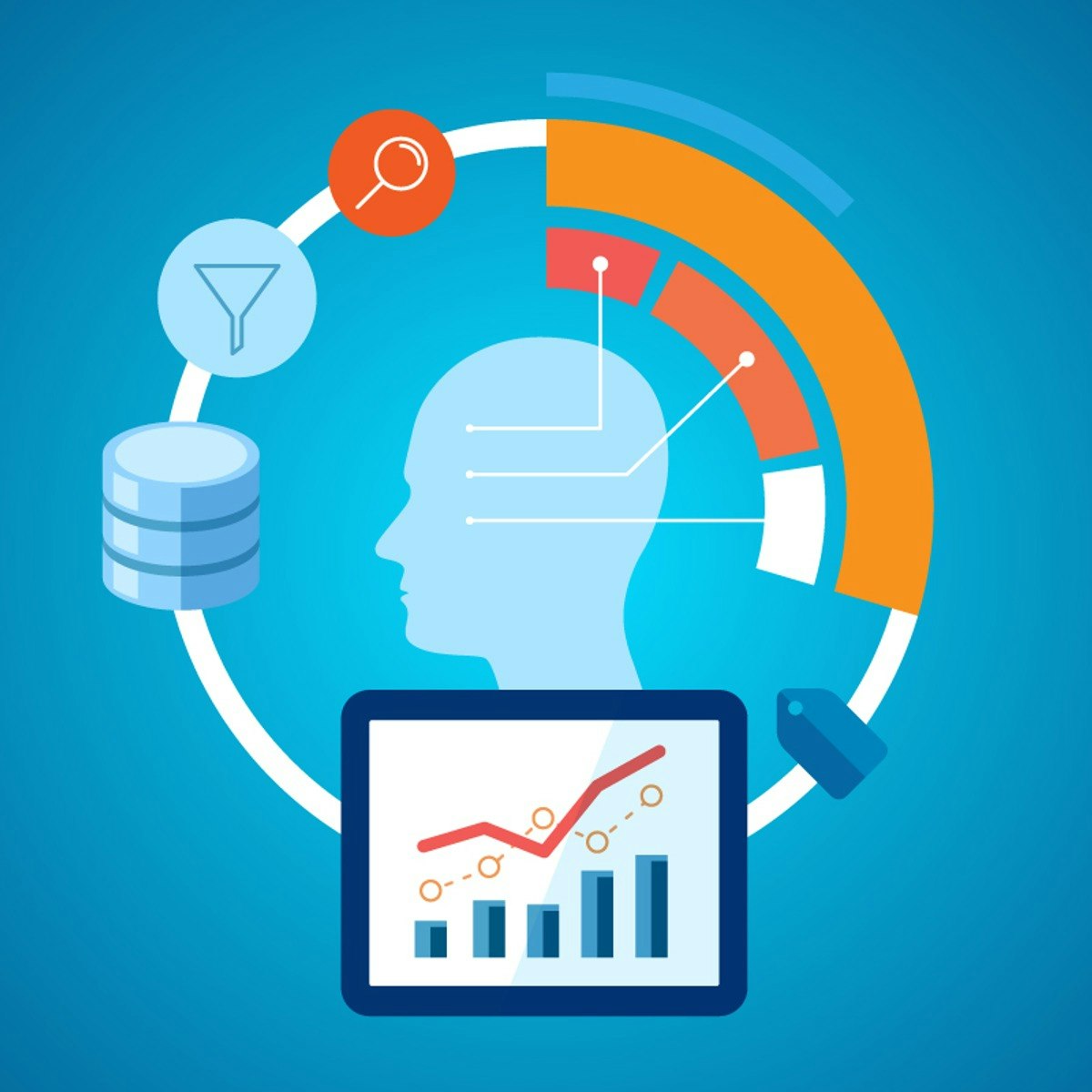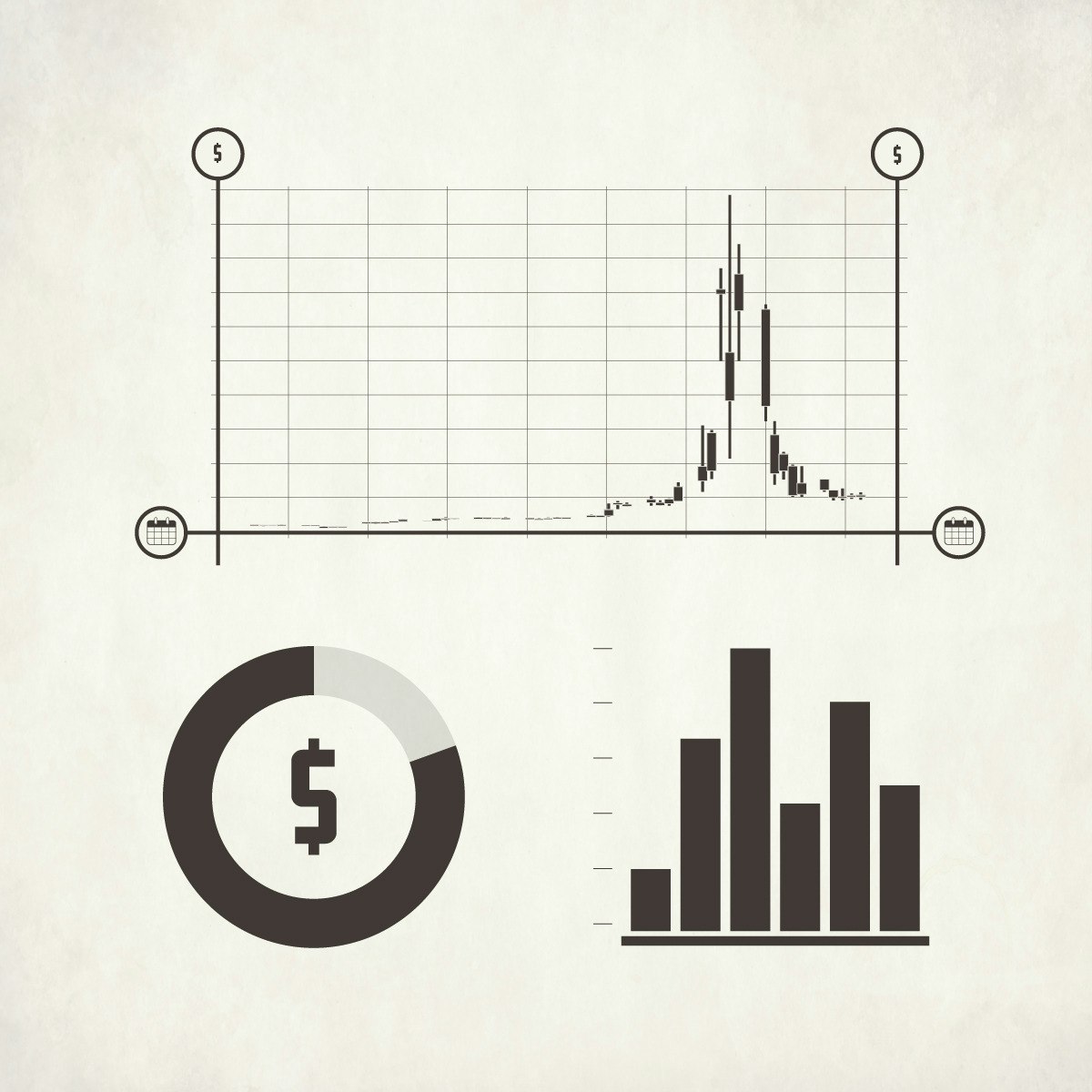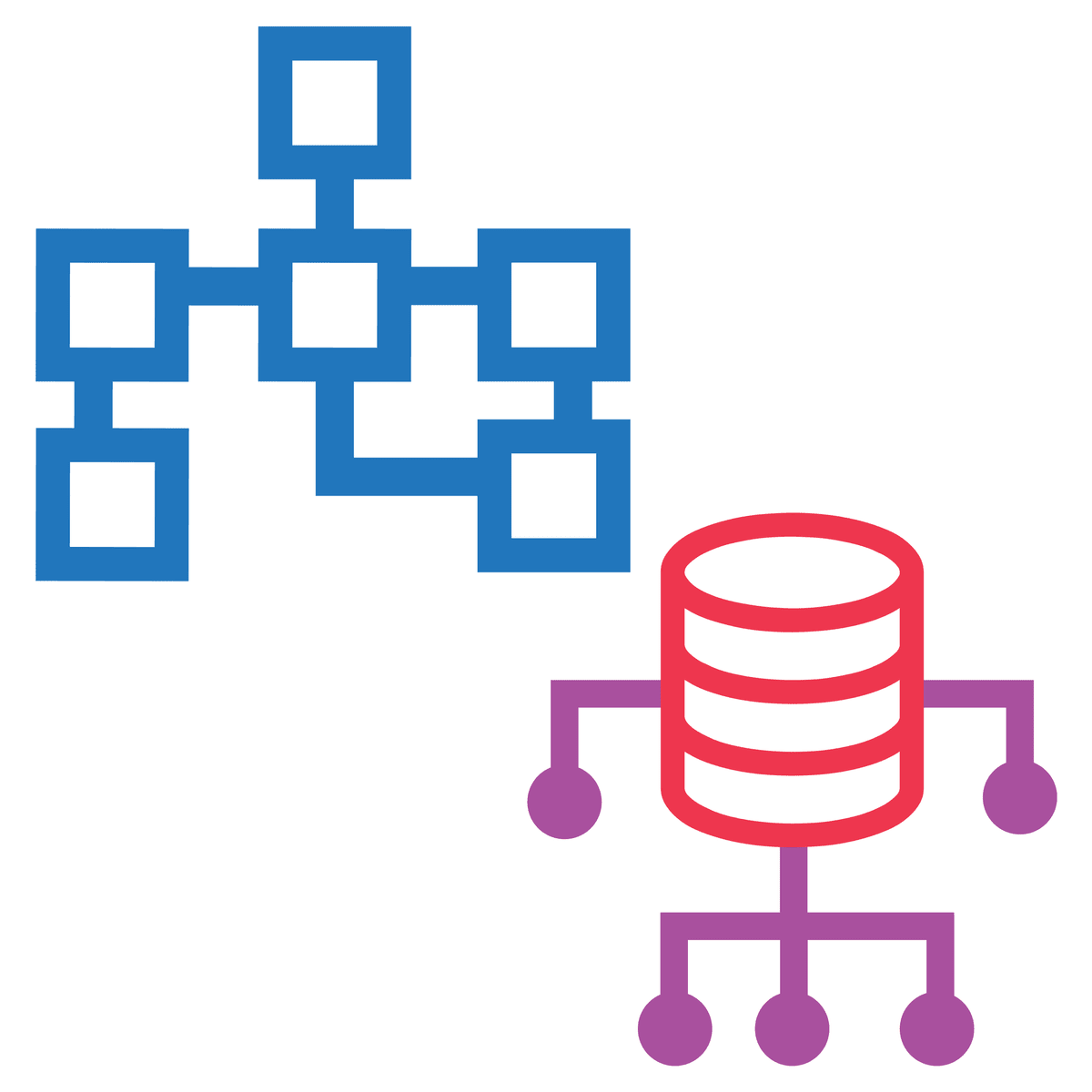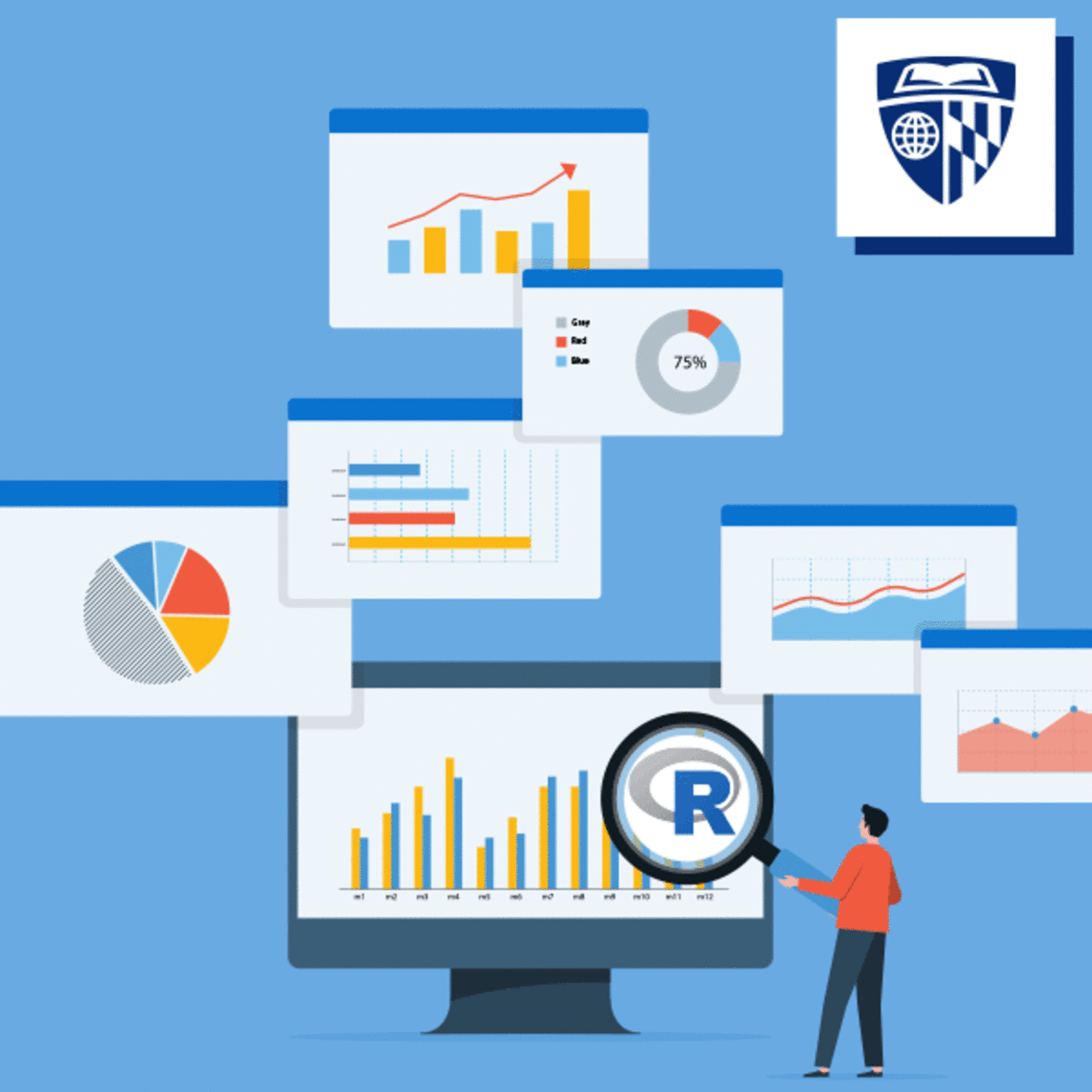Data Visualization Analyst
A Comprehensive Guide to Becoming a Data Visualization Analyst
A Data Visualization Analyst is a professional who translates complex data sets into understandable and engaging visual representations. Their work bridges the gap between raw information and insightful comprehension, enabling organizations to make informed decisions. Essentially, they are storytellers who use data as their language and visuals as their narrative medium. This role is increasingly vital in a world overflowing with data, as it helps to uncover patterns, trends, and insights that might otherwise remain hidden in spreadsheets or databases.
Working as a Data Visualization Analyst can be quite exciting. You'll have the opportunity to work with diverse datasets from various fields, turning abstract numbers into compelling visual stories that can drive strategy and innovation. Furthermore, this role often involves a blend of analytical thinking, creativity, and communication, offering a dynamic and intellectually stimulating career path. The ability to make complex information accessible and actionable for a wide range of audiences is a highly valued and rewarding skill.
Understanding the Role: What Data Visualization Analysts Do
The field of data visualization analysis is fundamentally about communication. These professionals take quantitative information and transform it into graphical formats such as charts, graphs, dashboards, and maps. The primary goal is to make data more accessible, understandable, and usable for decision-makers. This is more than just creating pretty pictures; it's about conveying meaning accurately and efficiently, highlighting important trends, and enabling insights that can lead to better outcomes.
This career path is distinct yet related to other data-focused roles. While a Data Analyst might focus more broadly on collecting, cleaning, and interpreting data, and a Data Scientist might delve deeper into statistical modeling and machine learning, the Data Visualization Analyst specializes in the presentation layer. They ensure that the discoveries made from data are communicated in the most effective way possible, often working closely with both data analysts and business stakeholders.
Core Responsibilities and Daily Tasks
A Data Visualization Analyst wears many hats. A significant part of their job involves understanding the needs of their audience. They must determine what information is most critical and how to present it in a way that is both intuitive and impactful. This often begins with sourcing and understanding the data itself.
Data cleaning and preparation are often crucial preliminary steps. While some organizations have dedicated data engineers for this, a visualization analyst frequently needs to wrangle data into a usable format. This might involve filtering, aggregating, and transforming raw data to make it suitable for visualization tools. Ensuring data accuracy and integrity throughout this process is paramount.
The heart of the role lies in designing and developing visualizations. This could range from static infographics to complex, interactive dashboards that allow users to explore data dynamically. Analysts choose appropriate chart types, color schemes, and layouts to effectively convey the intended message, always keeping the end-user's needs and data literacy in mind.
Collaboration is another key aspect. Data Visualization Analysts work with various stakeholders, including business leaders, data scientists, and IT departments, to identify visualization requirements and ensure the final products meet their needs. They also play an important role in presenting their findings and explaining the insights derived from the visualizations. Finally, they are often responsible for maintaining and updating existing dashboards and reports to reflect the latest data.
The Impact of Transforming Raw Data into Actionable Insights
The true power of a Data Visualization Analyst lies in their ability to convert complex, raw data into clear, actionable insights. In its unprocessed form, data can be overwhelming and difficult to interpret. By creating visual representations, analysts make it easier for decision-makers to spot trends, identify outliers, and understand relationships within the data that might not be apparent from looking at tables of numbers alone.
Consider a company trying to understand its sales performance. A spreadsheet with thousands of rows of sales figures might be impenetrable. However, a Data Visualization Analyst could create a dashboard showing sales trends over time, performance by region (perhaps using a map), and top-selling products (using a bar chart). This visual summary allows executives to quickly grasp the situation and make strategic decisions, such as allocating more resources to a high-performing region or investigating a decline in sales for a particular product.
This ability to drive data-informed decisions is what makes the role so valuable. Actionable insights derived from visualizations can lead to improved efficiency, new revenue opportunities, better customer understanding, and more effective strategies across all departments of an organization. Ultimately, Data Visualization Analysts empower organizations to leverage their data assets more effectively.
Why Data Visualization is Crucial in Today's Data-Driven World
In the modern era, organizations across all sectors are inundated with vast amounts of data, often referred to as Big Data. This explosion of information presents both an opportunity and a challenge. The opportunity lies in the potential to extract valuable insights that can drive innovation and competitive advantage. The challenge, however, is making sense of this data deluge.
Data visualization serves as a critical bridge in this context. Humans are visual creatures; we process and understand visual information much more quickly and effectively than raw text or numbers. Well-designed visualizations can simplify complexity, reveal hidden patterns, and communicate information in a universal language that transcends technical expertise. According to insights from the Forbes Technology Council, data visualization allows businesses to identify areas that need attention or improvement, understand what factors influence customer behavior, and predict sales volumes.
Furthermore, as businesses increasingly rely on data for day-to-day operations and strategic planning, the ability to quickly interpret and act on that data becomes paramount. Data visualization tools and the analysts who wield them enable organizations to be more agile and responsive to changing market conditions. This makes the role of a Data Visualization Analyst not just important, but indispensable in fostering a data-driven culture.
Industries and Sectors Relying on Data Visualization Analysts
The demand for Data Visualization Analysts spans a wide array of industries, as virtually any sector that collects data can benefit from their expertise. In business and finance, analysts help track performance metrics, identify market trends, and visualize financial data for reports and presentations. The Marketing field heavily relies on visualizations to understand campaign effectiveness, customer segmentation, and consumer behavior.
Healthcare is another significant sector, where visualizations are used to track patient outcomes, manage resources, understand disease outbreaks, and communicate complex medical information to both professionals and the public. Government and public policy also utilize data visualization to analyze demographic trends, assess program effectiveness, and make public data more accessible and understandable to citizens. Technology companies, particularly in areas like e-commerce and software development, use visualizations to monitor user engagement, product performance, and operational metrics.
Other notable sectors include retail, manufacturing (for supply chain optimization and quality control), education (for student performance analysis and institutional research), and even sports (for player performance analysis and fan engagement). The ubiquity of data means that skilled Data Visualization Analysts can find opportunities in almost any field they are passionate about.
Key Responsibilities of a Data Visualization Analyst
The daily work of a Data Visualization Analyst is multifaceted, blending technical skills with creative design and strategic thinking. Their overarching responsibility is to make data speak clearly and compellingly to various audiences. This involves a range of tasks, from the foundational work of data preparation to the final output of insightful visual reports.
The Journey from Raw Data: Cleaning and Preparation
Before any data can be visualized, it often needs to be meticulously cleaned and prepared. Raw data frequently comes from diverse sources and can be messy, incomplete, or inconsistent. A Data Visualization Analyst must be adept at identifying and correcting errors, handling missing values, and transforming data into a structured format suitable for analysis and visualization tools.
This process might involve tasks such as removing duplicate entries, standardizing formats (e.g., dates or addresses), and resolving inconsistencies between different data sets. Analysts may use various tools for this, from spreadsheet software for simpler tasks to programming languages like Python (with libraries such as Pandas) or R for more complex data manipulation. The quality of the visualization is directly dependent on the quality of the underlying data, making this preparatory stage absolutely critical.
Thorough data cleaning ensures that the insights derived are accurate and reliable, preventing misleading or incorrect conclusions. It's often said that data scientists and analysts can spend up to 80% of their time on data preparation, underscoring its importance in the overall workflow.
These courses provide a solid grounding in the essential data preparation techniques using popular tools.
Crafting Narratives: Designing Interactive Dashboards and Reports
Once the data is clean and ready, the Data Visualization Analyst focuses on designing and building visual tools, most commonly interactive dashboards and reports. Dashboards provide a consolidated view of key performance indicators (KPIs) and other important data points, allowing users to monitor progress and identify issues at a glance. Reports, on the other hand, might offer a more detailed or specific analysis for a particular purpose.
Designing effective visualizations requires a deep understanding of the data, the audience, and the story that needs to be told. Analysts select the most appropriate chart types—such as bar charts for comparisons, line charts for trends, scatter plots for relationships, or maps for geographical data—to represent the information clearly. They also pay close attention to design principles, including color theory, layout, and typography, to ensure the visuals are not only informative but also aesthetically pleasing and easy to interpret.
Interactivity is a key feature of modern data visualizations. Analysts often build dashboards that allow users to filter data, drill down into details, and explore different perspectives. This empowers users to ask their own questions and uncover insights relevant to their specific needs. Tools like Tableau, Power BI, and Qlik Sense are commonly used for creating these sophisticated, interactive visualizations.
Aspiring analysts can get hands-on experience with leading dashboarding tools through dedicated online courses. These offerings can help build practical skills in creating dynamic and informative visual reports.
For those interested in a comprehensive understanding of dashboard design, this book is highly recommended.
Bridging Gaps: Collaboration with Stakeholders
Data Visualization Analysts rarely work in isolation. A crucial part of their role involves collaborating closely with various stakeholders to understand their needs and requirements. These stakeholders can include business executives, department managers, data scientists, marketing teams, and sales personnel, each with different objectives and levels of data literacy.
Effective communication is key. Analysts must be able to ask the right questions to elicit clear requirements: What business questions need to be answered? Who is the target audience for the visualization? What key metrics are most important? What actions will be taken based on these insights? This collaborative process ensures that the final visualizations are relevant, useful, and aligned with business goals.
Furthermore, analysts often need to present their findings and explain the insights derived from their visualizations to these stakeholders. This requires strong storytelling skills and the ability to communicate complex information in a clear and concise manner, tailoring the presentation style to the audience. Feedback from stakeholders is also vital for iterating on and improving visualizations over time.
Ensuring Clarity and Understanding: Accessibility in Visual Outputs
A primary goal of data visualization is to make data understandable. Therefore, ensuring the clarity and accessibility of visual outputs is a core responsibility of a Data Visualization Analyst. This means creating visualizations that are not only visually appealing but also easy to interpret accurately by the intended audience, including those who may not be data experts.
Clarity involves choosing the right chart types, using clear labels and legends, avoiding clutter (often referred to as "chart junk"), and ensuring that the visual encoding of data (e.g., using size, color, or position) is intuitive and does not mislead. For instance, using a 3D pie chart might look flashy but can distort the perception of proportions, making a simple bar chart a better choice for clarity.
Accessibility also means considering users with different needs, such as those with color vision deficiencies. Analysts should choose color palettes that are distinguishable by people with various forms of color blindness and ensure that information is not conveyed by color alone. Providing alternative ways to access the information, such as data tables or textual summaries, can also enhance accessibility. The ultimate aim is to create visualizations that empower all users to understand and act upon the data presented.
Essential Skills and Competencies for Success
To excel as a Data Visualization Analyst, one needs a diverse skill set that combines technical proficiency with analytical acumen and strong communication abilities. It’s a role that sits at the intersection of data, design, and storytelling. Employers look for individuals who can not only work with data and tools but also think critically and convey insights effectively.
Mastering the Tools: Technical Proficiency
Technical skills form the bedrock of a Data Visualization Analyst's capabilities. Proficiency in data visualization software is paramount. Tools like Tableau and Microsoft Power BI are industry standards for creating interactive dashboards and reports. Familiarity with their features, such as connecting to various data sources, creating calculated fields, and building complex visualizations, is essential.
Beyond dedicated visualization platforms, knowledge of programming languages can be highly beneficial. Python, with libraries like Matplotlib, Seaborn, and Plotly, offers powerful capabilities for custom visualizations and data manipulation. Similarly, R, with packages like ggplot2, is widely used for statistical graphics. For web-based visualizations, knowledge of JavaScript libraries such as D3.js allows for highly customized and interactive data art.
SQL (Structured Query Language) is another crucial skill for extracting and manipulating data from relational databases. While not strictly a visualization skill, the ability to query data efficiently is often a prerequisite for creating meaningful visuals.
These courses offer excellent introductions and advanced techniques for the most common data visualization tools and programming libraries.
For those looking to delve deeper into D3.js, these books provide comprehensive guidance.
Thinking Visually: Statistical and Analytical Reasoning
Beyond technical proficiency, a Data Visualization Analyst must possess strong analytical and statistical reasoning skills. It's not enough to simply know how to use the tools; one must also understand what the data is saying and how to represent it accurately and meaningfully. This involves selecting appropriate metrics, understanding distributions, identifying correlations, and recognizing potential biases in the data.
A foundational understanding of statistics helps in choosing the right chart types to represent different kinds of data and relationships. For example, understanding when to use a histogram versus a bar chart, or a scatter plot versus a line graph, is crucial for effective communication. Analysts also need to be critical thinkers, capable of questioning the data and exploring it from different angles to uncover underlying patterns and insights.
This analytical mindset allows them to go beyond surface-level representations and create visualizations that truly illuminate the data and support informed decision-making. They need to anticipate the questions their audience might have and design visualizations that proactively address them.
Developing strong analytical and statistical reasoning can be achieved through dedicated courses that focus on these core competencies.
Communicating Insights: Storytelling and Presentation Skills
One of the most critical soft skills for a Data Visualization Analyst is the ability to tell compelling stories with data. Data, on its own, can be dry and unengaging. The analyst's role is to weave a narrative around the data, guiding the audience through the key findings and highlighting their significance. This involves structuring the visualization logically, using clear and concise language, and focusing on the insights that matter most to the audience.
Effective storytelling transforms data from a collection of facts into a persuasive argument or an illuminating explanation. This requires not only creating clear visuals but also being able to verbally present these visuals and their implications. Strong presentation skills, including the ability to articulate complex ideas simply and engage an audience, are therefore highly valued.
Analysts must be able to adapt their communication style to different audiences, from technical peers to non-technical executives. The goal is to ensure that the message is understood and that the insights lead to action.
These books are invaluable resources for learning how to craft compelling narratives with data.
This course can help hone your data storytelling abilities using specific tools.
The Art of Presentation: Aesthetic Design Principles
While clarity and accuracy are paramount, the aesthetic quality of a visualization also plays a significant role in its effectiveness. A well-designed visualization is more engaging, easier to understand, and more memorable. Therefore, Data Visualization Analysts benefit from an understanding of basic design principles.
This includes knowledge of color theory (using colors effectively to highlight information and ensure readability), layout and composition (arranging elements in a balanced and organized way), typography (choosing clear and appropriate fonts), and the judicious use of white space to avoid clutter. The goal is not to create "art" for its own sake, but to use design to enhance understanding and communication.
An eye for detail and a sense of visual appeal can elevate a good visualization to a great one. While not every analyst needs to be a graphic designer, familiarity with these principles helps in creating professional and impactful visual outputs that capture attention and convey information effectively.
Consider these resources for understanding the foundational principles of visual display.
This course directly addresses best practices in data visualization design.
Educational Pathways to Becoming a Data Visualization Analyst
Embarking on a career as a Data Visualization Analyst can be approached through various educational avenues. While a specific "Data Visualization Analyst" degree is uncommon, several fields of study provide a strong foundation. The journey often involves a blend of formal education, supplementary learning, and practical experience.
Laying the Groundwork: Relevant Undergraduate Degrees
A bachelor's degree is typically the entry point for many aspiring Data Visualization Analysts. Degrees in fields like Data Science, Computer Science, Statistics, or Mathematics are highly relevant as they provide a strong quantitative and analytical foundation. These programs often cover essential concepts in data handling, statistical analysis, and programming.
Degrees in Business Analytics, Management Information Systems (MIS), or Economics can also be excellent pathways, particularly for those interested in applying visualization skills within a business context. These programs often combine technical skills with business acumen. Even degrees in fields like Graphic Design or Information Design can be relevant, especially if supplemented with data analysis and technical skills, as they emphasize the visual communication aspects of the role.
Regardless of the specific major, coursework that includes data analysis, statistics, database management, and programming will be beneficial. Increasingly, universities are offering specific modules or specializations in data visualization within these broader degree programs.
Deepening Expertise: Graduate Programs and Specializations
For those seeking to deepen their expertise or pursue more advanced roles, a master's degree can be a significant asset. Specialized master's programs in Data Science, Business Analytics, or Human-Computer Interaction often have dedicated tracks or extensive coursework in data visualization. These programs typically offer more advanced theoretical knowledge and practical application through complex projects.
A graduate degree can provide a more profound understanding of advanced visualization techniques, data storytelling, cognitive psychology related to visual perception, and the use of sophisticated tools and programming libraries. Research opportunities within these programs might also allow students to explore cutting-edge areas of visualization.
While a PhD is generally not required for most industry positions as a Data Visualization Analyst, it can be beneficial for those interested in academic research, leading research in large corporations, or pushing the boundaries of visualization science. PhD programs in fields like Computer Science (with a focus on visualization or HCI), Information Science, or Statistics could be relevant.
The Edge of Innovation: Research in Human-Computer Interaction and Visualization
The field of data visualization is continually evolving, driven by research in areas such as Human-Computer Interaction (HCI), information visualization, and visual analytics. HCI research explores how people interact with information and technology, leading to more intuitive and effective visualization designs. This research informs best practices for creating user-centered visualizations that enhance understanding and decision-making.
Academic research also explores new visualization techniques for complex data types (e.g., high-dimensional data, network data, temporal data), investigates the cognitive and perceptual aspects of how people interpret visuals, and develops novel tools and algorithms for creating and interacting with visualizations. Staying abreast of such research can be beneficial for practitioners looking to innovate and apply the latest techniques.
For individuals passionate about contributing to the advancement of the field itself, pursuing research in these areas, perhaps through graduate studies or within research-focused organizations, can be a rewarding path. This often involves a deep dive into topics like visual perception, information theory, and interaction design.
Boosting Your Profile: Certifications and Supplementary Coursework
Beyond formal degrees, professional certifications and supplementary online courses can significantly enhance a Data Visualization Analyst's profile and skill set. Certifications offered by software vendors, such as the Tableau Desktop Specialist or Certified Associate, or Microsoft's Power BI certifications, demonstrate proficiency in specific, widely-used tools. These can be valuable for showcasing practical skills to potential employers.
Online learning platforms like OpenCourser offer a vast array of courses covering all aspects of data visualization, from introductory concepts to advanced techniques using various tools and programming languages. These courses provide flexible and often more affordable options for acquiring new skills or deepening existing knowledge. They are excellent for individuals looking to pivot into the field, supplement their formal education, or stay updated with the latest technologies.
Building a portfolio of projects, often a component of these courses or undertaken independently, is also crucial. A strong portfolio demonstrates practical abilities and creative thinking more effectively than a list of qualifications alone. These supplementary learning opportunities allow for continuous professional development, which is vital in such a rapidly evolving field.
Here are some courses that can help you prepare for industry-recognized certifications or deepen your skills in specific tools:
Self-Directed Learning and Online Resources for Aspiring Analysts
For those charting their own course into data visualization, particularly career changers or independent learners, self-directed learning and online resources offer a wealth_of opportunities. The journey requires discipline and a strategic approach, but the accessibility of high-quality materials makes it more achievable than ever to build the necessary skills and knowledge.
Online courses are particularly well-suited for building a foundational understanding and acquiring practical skills in data visualization. Platforms like OpenCourser aggregate thousands of courses, allowing learners to find options that fit their specific learning goals, whether it's mastering a new tool like Tableau or Python, or understanding the principles of visual design. Many courses are project-based, providing invaluable hands-on experience.
Laying the Keystones: Building Foundational Data Literacy
Before diving into complex visualization tools and techniques, a solid foundation in data literacy is essential. This involves understanding basic statistical concepts, different data types, and how data is collected, structured, and interpreted. Without this understanding, it's easy to create visualizations that are misleading or misinterpreted, even if they are aesthetically pleasing.
Online courses often cover these fundamentals as part of broader data analysis or data science programs. Learners can seek out modules on descriptive statistics, data exploration, and data quality assessment. Understanding concepts like mean, median, mode, standard deviation, and correlation will empower you to choose appropriate visual representations and to critically evaluate the data you are working with.
Many introductory courses are available to help build this crucial understanding of data from the ground up.
Exploring the Ecosystem: Open-Source Tools and Communities
The world of data visualization is rich with open-source tools and vibrant online communities. Engaging with these resources can significantly accelerate learning and provide valuable support. Programming languages like Python (with libraries such as Matplotlib, Seaborn, and Plotly) and R (with ggplot2) are powerful, free, and widely used for creating a vast range of visualizations.
Learning these tools not only equips you with versatile skills but also connects you to extensive online communities. Websites like Stack Overflow, GitHub, and various data science forums are replete with tutorials, code examples, and discussions where learners can ask questions and share their work. Contributing to open-source projects or participating in online data visualization challenges (e.g., on platforms like Kaggle) can be excellent ways to practice skills and gain visibility.
Many online courses specifically focus on these open-source tools, guiding learners from basic syntax to advanced applications.
These books offer in-depth guidance on using Python for data analysis and visualization.
Showcasing Your Talent: Portfolio Development Through Personal Projects
For aspiring Data Visualization Analysts, especially those taking a self-directed path, a strong portfolio is arguably more important than a traditional resume. A portfolio showcases your practical skills, creativity, and ability to derive insights from data. It provides tangible evidence of what you can do, which is invaluable to potential employers.
Personal projects are an excellent way to build your portfolio. Choose datasets that interest you (many public datasets are available online from sources like government websites, Kaggle, or data.world) and create visualizations that tell a story or answer a specific question. Document your process, including data sourcing, cleaning, analysis, and your design choices. Platforms like GitHub Pages, Tableau Public, or even a personal blog are great for showcasing your work.
Many online courses include capstone projects that can form the basis of a portfolio piece. Don't be afraid to start small and gradually tackle more complex projects as your skills grow. The key is to demonstrate your ability to transform data into compelling and insightful visuals.
This capstone course, for example, is designed to help you create a significant portfolio piece.
Finding Your Rhythm: Balancing Self-Study with Structured Learning
While self-study offers flexibility, it also requires significant discipline and organization. Balancing unstructured exploration with structured learning can often be the most effective approach. Online courses provide a curriculum, deadlines (even if self-paced), and often a community of fellow learners, which can provide motivation and a clear learning path.
Start by identifying the core skills you need to develop (e.g., a specific tool, a programming language, statistical concepts). Then, search for structured courses on platforms like OpenCourser's Data Science section that cover these topics. Supplement this structured learning with your own exploration – read blogs, follow experts on social media, experiment with different datasets, and participate in online communities.
Set realistic goals and create a study schedule. Breaking down the learning process into manageable chunks can make it less daunting. Remember that consistency is key. Even a few hours of focused study each week can lead to significant progress over time. Don't be afraid to revisit concepts or seek help when you're stuck. The journey of a self-directed learner is challenging but immensely rewarding.
For learners managing their own education, OpenCourser's Learner's Guide offers valuable articles on creating a curriculum, staying disciplined, and making the most of online learning.
Career Progression for Data Visualization Analysts
The career path for a Data Visualization Analyst is not always linear but offers various avenues for growth and specialization. As data becomes increasingly central to business operations, skilled visualization professionals are well-positioned for advancement. Progression often depends on a combination of experience, skill development, and an ability to demonstrate increasing impact within an organization or field.
Starting the Journey: Entry-Level Roles
Entry-level positions in data visualization often carry titles such as Junior Data Analyst, Business Intelligence (BI) Analyst, Reporting Analyst, or Data Visualization Specialist. In these roles, individuals typically focus on creating reports and dashboards under the guidance of more senior analysts or managers. They gain hands-on experience with visualization tools, data preparation techniques, and understanding business requirements.
The primary responsibilities might include gathering data from various sources, cleaning and transforming it, building basic to intermediate visualizations, and assisting with the maintenance of existing reporting systems. These roles are crucial for building a strong foundation in the practical aspects of data visualization and understanding how data insights are used within an organization.
Aspiring professionals should focus on mastering one or two key visualization tools (like Tableau or Power BI) and developing a portfolio of projects, even if from academic coursework or personal initiatives. Strong communication skills and a willingness to learn are also highly valued at this stage.
Climbing the Ladder: Mid-Career Transitions to Senior or Managerial Positions
With several years of experience, Data Visualization Analysts can progress to senior roles. A Senior Data Visualization Analyst typically takes on more complex projects, has greater autonomy, and may mentor junior team members. They are expected to have a deep understanding of visualization best practices, data storytelling, and be able to translate complex business problems into effective visual solutions.
Further progression can lead to managerial positions, such as BI Manager, Analytics Manager, or Head of Data Visualization. In these roles, responsibilities shift towards leading a team, defining visualization strategy, managing projects, and liaising with senior leadership. Strong leadership, project management, and strategic thinking skills become increasingly important at this stage.
Continuous learning is vital for mid-career professionals. Staying updated with new tools, techniques, and industry trends is essential for career advancement. Specializing in a particular industry (e.g., healthcare, finance) or a specific type of visualization (e.g., geospatial, real-time dashboards) can also create opportunities for growth.
Expanding Horizons: Cross-Functional Moves into UX Design or Data Engineering
The skills developed as a Data Visualization Analyst can open doors to related fields. For those with a strong aptitude for design and user experience, a transition into UX (User Experience) Design or UI (User Interface) Design, particularly for data-intensive applications, is a natural progression. Their understanding of how users interact with and interpret visual information is highly valuable in these roles.
Alternatively, analysts with a strong technical background, particularly in data manipulation, databases, and programming, might move into Data Engineering. Data Engineers focus on building and maintaining the infrastructure and pipelines that make data available and usable for analysts and data scientists. A Data Visualization Analyst's understanding of data requirements for reporting and analysis can be a significant asset in this field.
Other potential cross-functional moves could include roles in product management (for data products), data governance, or even specialized data journalism, depending on individual interests and complementary skills.
Forging Your Own Path: Freelancing and Consultancy Opportunities
Experienced Data Visualization Analysts also have the option to pursue freelancing or consultancy work. Many organizations, particularly small to medium-sized businesses, may not have the need or resources for a full-time visualization expert but require project-based assistance. Freelancers can offer specialized services in dashboard development, report creation, data storytelling, and training.
Consultancy roles can involve advising organizations on their data visualization strategy, helping them choose the right tools, establish best practices, or build out their internal analytics capabilities. This path offers flexibility and the opportunity to work with a diverse range of clients and projects. However, it also requires strong business development skills, self-motivation, and the ability to manage client relationships effectively.
Building a strong professional network and a compelling portfolio of successful projects is crucial for those considering a freelance or consulting career. Online platforms that connect freelancers with clients can also be a valuable resource for finding opportunities.
Tools and Technologies Shaping the Field
The landscape of data visualization is constantly evolving, driven by advancements in software, programming capabilities, and an increasing demand for more sophisticated ways to interpret data. A Data Visualization Analyst must be familiar with a range of tools and technologies, from industry-standard software to emerging platforms, to effectively perform their role.
Industry-Standard Software Platforms
Several software platforms have become mainstays in the world of data visualization due to their power, flexibility, and user-friendly interfaces. Tableau is widely recognized for its intuitive drag-and-drop interface that allows users to create a wide variety of interactive charts, dashboards, and stories. It connects to numerous data sources and is popular across many industries for business intelligence and analytics.
Microsoft Power BI is another leading platform, particularly strong within organizations already using the Microsoft ecosystem. It offers robust data modeling capabilities, interactive visualizations, and seamless integration with services like Azure and Excel. Qlik Sense is known for its associative engine, which allows users to explore data freely and uncover hidden insights by making selections across multiple visualizations simultaneously.
Other tools like Google Looker Studio (formerly Data Studio) offer free and accessible ways to create shareable reports and dashboards, especially when working with Google ecosystem data sources. Proficiency in at least one or two of these dominant platforms is often a core requirement for Data Visualization Analyst roles.
These courses can help you get started or advance your skills with these industry-standard tools.
For those looking for a comprehensive introduction to Tableau, this book can be a valuable resource.
Power and Flexibility: Programming Libraries
For analysts who require more customization and control than off-the-shelf software provides, programming libraries offer immense power and flexibility. Python is a dominant language in data science, and its visualization ecosystem is rich and mature. Libraries like Matplotlib provide a foundational plotting framework, while Seaborn builds on Matplotlib to create more statistically informative and aesthetically pleasing graphics. Plotly (and Plotly Dash for web applications) allows for the creation of interactive, web-based visualizations.
R is another language favored by statisticians and data scientists, with powerful visualization capabilities, most notably through the ggplot2 package, which implements the "grammar of graphics" philosophy. For highly bespoke and interactive web visualizations, D3.js (Data-Driven Documents) is a JavaScript library that provides unparalleled control over the visual output, though it has a steeper learning curve.
Understanding these libraries allows analysts to create virtually any type of visualization imaginable and integrate them into custom applications or data analysis workflows. Many organizations look for analysts who can leverage these programming skills for advanced or specialized visualization needs.
Here are courses that delve into these powerful programming libraries:
For a deep dive into D3.js concepts and applications, consider these books.
On the Horizon: Emerging Tools and Platforms
The field of data visualization is dynamic, with new tools and technologies continually emerging. Augmented Reality (AR) and Virtual Reality (VR) are beginning to be explored for immersive data experiences, allowing users to interact with data in three-dimensional spaces. While still niche, these technologies hold potential for analyzing highly complex datasets, such as in scientific research or engineering design.
AI and Machine Learning are also increasingly integrated into visualization tools. AI can assist in automating aspects of visualization design, suggesting appropriate chart types, identifying patterns for emphasis, or even generating natural language summaries of visual insights. These AI-powered features aim to make data exploration more efficient and accessible to a broader range of users.
Cloud-based visualization platforms continue to grow in popularity, offering scalability, collaboration features, and real-time data processing capabilities. As data volumes grow and the need for timely insights becomes more critical, these cloud solutions are becoming essential for many organizations. Staying aware of these emerging trends and tools is important for long-term career growth in data visualization.
Keeping it Together: Version Control and Collaborative Workflows
In many professional settings, Data Visualization Analysts work as part of a team. This necessitates tools and practices for collaboration and version control, especially when dealing with code-based visualizations or complex dashboard files. Version control systems like Git, often used with platforms like GitHub or GitLab, are essential for tracking changes to code, managing different versions of projects, and enabling multiple people to work on the same project simultaneously without conflicts.
For dashboarding tools, built-in server or cloud platform functionalities often provide mechanisms for sharing, collaboration, and version management. Understanding how to work within these collaborative environments, share work effectively, and incorporate feedback is a crucial soft skill that complements technical proficiency.
Adopting systematic workflows, clear documentation practices, and consistent naming conventions also contributes significantly to successful team collaboration and the maintainability of visualization projects over time. These practices ensure that visualizations remain accurate, up-to-date, and understandable by other team members.
Ethical Considerations in Data Visualization
While data visualization is a powerful tool for communication and insight, it also carries ethical responsibilities. Analysts must be mindful of how their visual representations can influence perception and decision-making, ensuring they present data accurately, fairly, and without causing harm. Ethical considerations are paramount in maintaining trust and credibility.
The Thin Line: Avoiding Misleading Representations
One of the primary ethical challenges in data visualization is the potential to unintentionally or intentionally mislead the audience. This can happen in various ways, such as by truncating the Y-axis of a bar chart to exaggerate differences, using inappropriate chart types that distort relationships (like using a line chart for categorical data), or cherry-picking data to support a particular narrative while ignoring contradictory evidence.
Analysts have a responsibility to choose visual encodings and scales that accurately reflect the underlying data. For example, when representing proportions, pie charts should always add up to 100%, and the areas of bubbles in a bubble chart should accurately correspond to the data values. Transparency about data sources, methodologies, and any transformations applied to the data is also crucial for allowing the audience to critically assess the visualization.
The goal should always be to illuminate the data truthfully, not to manipulate or obscure it. A keen awareness of common pitfalls and a commitment to intellectual honesty are essential. Reputable sources like the Urban Institute provide guidelines on creating clear and non-misleading visualizations.
Protecting Individuals: Data Privacy and Anonymization Techniques
Data Visualization Analysts often work with sensitive information, including personal data. Protecting the privacy of individuals whose data is being visualized is a critical ethical obligation. This involves adhering to data privacy regulations (such as GDPR or HIPAA, depending on the context and location) and implementing appropriate anonymization or de-identification techniques before data is visualized, especially if the visualizations are to be shared publicly or with a wider audience.
Anonymization techniques might include removing direct identifiers (like names and addresses), aggregating data to a level where individuals cannot be singled out (e.g., showing regional averages instead of individual data points), or applying statistical methods like k-anonymity or differential privacy. Analysts must carefully consider the risk of re-identification and take steps to mitigate it.
It's important to balance the need for detailed insights with the imperative to protect individual privacy. This often requires careful judgment and consultation with data governance and legal experts within an organization.
Global Perspectives: Cultural Sensitivity in Visual Design
When creating visualizations for a diverse or global audience, cultural sensitivity in visual design becomes an important ethical consideration. Colors, symbols, and imagery can have different meanings and connotations across cultures. A color that is seen as positive in one culture might be negative in another. Similarly, certain icons or metaphors might be easily understood in one cultural context but confusing or even offensive in another.
Analysts should strive to use universally understood visual elements where possible or provide clear explanations. When in doubt, it's advisable to research the cultural context of the target audience or seek feedback from individuals familiar with that culture. Avoiding stereotypes and ensuring that visualizations are inclusive and respectful of all groups is essential.
This consideration extends to language and how data is framed. Ensuring that the narrative accompanying the visualization is culturally appropriate and does not perpetuate harmful biases is part of responsible data communication.
Uncovering Inequities: Bias Detection in Dataset Selection and Interpretation
Bias can creep into data visualizations at multiple stages, from the initial collection and selection of data to its interpretation and presentation. Datasets themselves can reflect historical or systemic biases, and if these are not acknowledged and addressed, the resulting visualizations can inadvertently perpetuate or even amplify these biases.
Data Visualization Analysts should be critical of their data sources and aware of potential biases within them. For example, if a dataset underrepresents certain demographic groups, visualizations based on that data may not accurately reflect the experiences of those groups. Analysts have a role in highlighting such limitations and uncertainties in the data.
Furthermore, personal biases can influence how an analyst chooses to visualize and interpret data. It's important to strive for objectivity, consider alternative interpretations, and seek diverse perspectives when developing visualizations. The ethical aim is to present a fair and comprehensive picture, acknowledging any limitations or potential biases in the data or the analytical process.
Market Trends and Future Outlook for Data Visualization Analysts
The field of data visualization is dynamic, continuously shaped by technological advancements, evolving business needs, and a growing recognition of the power of data-driven insights. Understanding current market trends and the future outlook is crucial for aspiring and practicing Data Visualization Analysts to navigate their careers effectively. The market for data visualization tools and expertise is experiencing robust growth, with projections indicating a significant increase in market size over the coming years.
The Algorithmic Assistant: Impact of AI on Automated Visualization
Artificial Intelligence (AI) and Machine Learning (ML) are increasingly influencing the data visualization landscape. AI algorithms can automate aspects of the visualization process, such as suggesting appropriate chart types based on the data structure, identifying key patterns or anomalies to highlight, and even generating natural language summaries of visual insights. This can help analysts work more efficiently and enable non-experts to create basic visualizations more easily.
While some may fear AI will replace human analysts, the more likely scenario is that AI will augment their capabilities, freeing them from repetitive tasks and allowing them to focus on more complex analysis, storytelling, and strategic thinking. Analysts will still be needed to interpret AI-generated outputs, ensure their relevance and accuracy, and craft compelling narratives that resonate with human audiences. The rise of AI is expected to create new opportunities for those who can effectively leverage these tools.
AI-driven tools are also enhancing predictive analytics capabilities within visualizations, allowing businesses to forecast future trends more effectively. The ability to integrate AI for deeper insights is becoming a key trend in modern market research and business intelligence.
These courses provide insights into the broader field of Data Science and AI, which are increasingly intertwined with data visualization.
Expanding Frontiers: Growing Demand in Healthcare and Public Policy
The demand for data visualization skills is burgeoning across various sectors, with healthcare and public policy emerging as particularly strong growth areas. In healthcare, visualizations are crucial for understanding patient data, tracking disease outbreaks, optimizing hospital operations, and communicating complex health information to both professionals and the public. The COVID-19 pandemic underscored the critical role of clear and timely data visualization in public health responses. The healthcare data analytics market is projected for significant growth, driving demand for professionals skilled in making sense of this data.
In public policy, governments and non-profit organizations are increasingly using data visualization to analyze societal trends, evaluate the impact of policies, allocate resources effectively, and enhance transparency by making public data more accessible to citizens. As these sectors continue to embrace data-driven decision-making, the need for analysts who can translate complex datasets into understandable and actionable visuals will only intensify.
You can explore courses specifically tailored to or applicable in these growing sectors on platforms like OpenCourser's Health & Medicine or Public Policy sections.
The World is Your Office: Remote Work and Global Opportunities
The nature of data visualization work, which is often computer-based and involves digital deliverables, lends itself well to remote work arrangements. Many companies are now offering remote or hybrid positions for Data Visualization Analysts, expanding the talent pool globally and providing more flexibility for professionals in the field.
This trend opens up opportunities for analysts to work for companies located in different cities or even countries without the need for relocation. Freelancing and contract work are also increasingly viable options, with platforms connecting skilled visualization experts with projects from around the world. The remote job market for data analysts, including those specializing in visualization, has seen significant growth.
To succeed in a remote environment, strong communication skills, self-discipline, and proficiency in collaborative tools are essential. The ability to manage one's time effectively and maintain productivity while working independently is also key. The global nature of these opportunities means that analysts might collaborate with diverse, international teams.
Visualizing a Greener Future: Sustainability Reporting Applications
There is a growing emphasis on Environmental, Social, and Governance (ESG) factors in the corporate world, leading to an increased need for robust sustainability reporting. Data visualization plays a crucial role in helping organizations communicate their ESG performance to stakeholders, including investors, customers, and regulatory bodies.
Analysts are needed to create clear and compelling visualizations that track progress towards sustainability goals, such as reducing carbon emissions, improving workforce diversity, or ensuring ethical supply chains. Effective visualization can make complex sustainability data more accessible and understandable, fostering transparency and accountability.
This emerging area presents exciting opportunities for Data Visualization Analysts who are passionate about sustainability and want to use their skills to help organizations demonstrate their commitment to responsible practices. As regulatory requirements for ESG reporting become more stringent, the demand for visualization expertise in this domain is likely to grow. You can learn more about this area by exploring topics related to Sustainability and Environmental Sciences.
Frequently Asked Questions About a Career as a Data Visualization Analyst
For those considering a career as a Data Visualization Analyst, several common questions often arise. Addressing these can help clarify the role and its requirements, aiding in the decision-making process. Here, we tackle some of the most frequently asked questions.
Is extensive coding mandatory for this role?
While extensive coding is not always mandatory for every Data Visualization Analyst role, some level of coding proficiency can be highly beneficial and may be required for certain positions. Many powerful visualization tools like Tableau and Power BI have user-friendly interfaces that allow for the creation of sophisticated dashboards with minimal to no code.
However, knowledge of languages like SQL is often essential for data extraction and manipulation. Familiarity with Python or R can significantly expand an analyst's capabilities, enabling custom visualizations, advanced data analysis, and automation of repetitive tasks. For web-based visualizations, JavaScript (especially D3.js) is the standard. So, while you can start in the field with strong tool-based skills, adding coding to your repertoire will open up more opportunities and allow for greater flexibility and power.
Many introductory roles might focus more on tool proficiency, while more advanced or specialized roles may require stronger coding skills. It often depends on the specific company and the complexity of the projects.
How does a Data Visualization Analyst differ from a Data Scientist?
While both Data Visualization Analysts and Data Scientists work with data, their primary focus and skill sets differ. Data Scientists often have a broader role that includes collecting, cleaning, and processing large datasets, performing complex statistical analysis, building machine learning models, and developing algorithms to solve business problems. Their work is often more exploratory and research-oriented.
A Data Visualization Analyst, on the other hand, specializes in the presentation and communication of data insights. They take the findings from data analysis (which might be performed by themselves, a data analyst, or a data scientist) and translate them into clear, compelling, and actionable visual formats. Their expertise lies in understanding visual perception, design principles, and storytelling with data. Think of it this way: if a Data Scientist uncovers the story hidden in the data, the Data Visualization Analyst is the master storyteller who brings that narrative to life for the audience.
There is often overlap, and in smaller organizations, one person might perform aspects of both roles. However, in larger teams, these roles are typically distinct, with the Data Visualization Analyst focusing on the crucial "last mile" of data communication.
What types of industries typically hire the most Data Visualization Analysts?
Data Visualization Analysts are in demand across a wide spectrum of industries because virtually every sector now generates and relies on data. However, some industries tend to have a higher concentration of these roles. The technology sector, including software companies, e-commerce platforms, and social media giants, is a major employer, using visualizations to track user behavior, product performance, and operational metrics.
The finance and banking industry heavily relies on data visualization for risk management, market analysis, fraud detection, and financial reporting. Healthcare is another rapidly growing area, using visualizations for patient data analysis, public health monitoring, and operational efficiency. Consulting firms also hire many Data Visualization Analysts to help their clients across various industries make sense of their data.
Other significant sectors include marketing and advertising (for campaign analysis and customer insights), retail (for sales trends and inventory management), and government/public sector (for policy analysis and public information). The pervasiveness of data means opportunities are widespread and diverse.
Can individuals with a graphic design background transition into this field?
Yes, individuals with a graphic design background can certainly transition into data visualization, and they often bring valuable skills to the role. Graphic designers typically have a strong understanding of visual principles, color theory, layout, and user experience, all of which are crucial for creating effective and engaging visualizations. Their expertise in aesthetics can significantly enhance the quality and impact of data presentations.
To make a successful transition, graphic designers would typically need to augment their design skills with data-related competencies. This includes learning data analysis fundamentals, understanding basic statistics, and gaining proficiency in data visualization tools (like Tableau or Power BI) and potentially some data manipulation languages like SQL or scripting languages like Python. Building a portfolio that showcases projects where design skills are applied to data-driven narratives would be key.
Many online courses and resources are available to help bridge this gap, focusing on the intersection of design and data. The combination of strong design sensibilities with analytical capabilities can make for a very powerful Data Visualization Analyst.
What are the typical entry-level salary ranges for a Data Visualization Analyst?
Entry-level salary ranges for Data Visualization Analysts can vary significantly based on several factors, including geographic location (cost of living in a particular city or region), the size and type of the employing organization, the specific industry, and the candidate's educational background and relevant skills (including internships or significant portfolio projects).
Generally, in the United States, entry-level salaries might range from approximately $55,000 to $75,000 per year. However, this is a broad estimate. In high-cost-of-living areas or in highly competitive industries like tech or finance, starting salaries could be higher. Conversely, in areas with a lower cost of living or for roles with fewer technical demands, they might be at the lower end of that spectrum.
It's advisable to research salary data specific to your region and target industry using resources like Glassdoor, Salary.com, or LinkedIn Salary. Remember that gaining experience and developing specialized skills will typically lead to higher earning potential as you progress in your career.
How vulnerable is the role of a Data Visualization Analyst to AI automation?
The impact of AI on the role of a Data Visualization Analyst is more likely to be one of augmentation rather than complete replacement, especially for roles requiring critical thinking, storytelling, and contextual understanding. AI can automate repetitive tasks like generating basic charts or identifying simple patterns, which can free up analysts to focus on more complex and strategic aspects of their work.
AI can act as a powerful assistant, suggesting visualizations or highlighting anomalies, but the human element remains crucial for interpreting these outputs in the context of specific business problems, crafting nuanced narratives, understanding stakeholder needs, and ensuring ethical considerations are met. The creativity, design intuition, and communication skills that are central to effective data visualization are difficult for AI to replicate fully.
However, analysts will need to adapt and learn how to leverage AI tools effectively to remain competitive. The role may evolve to incorporate more AI-driven insights and workflows, but the fundamental need for human expertise in translating data into meaningful stories for human consumption is likely to persist. Continuous learning and focusing on higher-level analytical and storytelling skills will be key to navigating the changing landscape.
Embarking on Your Data Visualization Journey
The path to becoming a Data Visualization Analyst is an exciting one, filled with opportunities to blend analytical rigor with creative expression. It’s a career that empowers you to unlock the stories hidden within data and to drive meaningful change and informed decisions across diverse industries. Whether you are just starting your educational journey, considering a career pivot, or looking to enhance your current skill set, the resources and pathways available today make this dynamic field more accessible than ever.
Remember that building a strong foundation in data literacy, mastering relevant tools and technologies, honing your analytical and storytelling skills, and developing a compelling portfolio are key steps toward success. Embrace the learning process, stay curious about the ever-evolving landscape of data, and don't hesitate to explore the wealth of online courses and communities available through platforms like OpenCourser to guide and support your ambitions. Your journey into the world of data visualization is an investment in a future where clarity and insight are highly prized.

